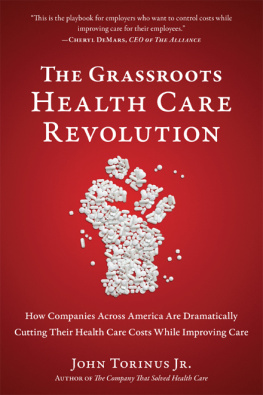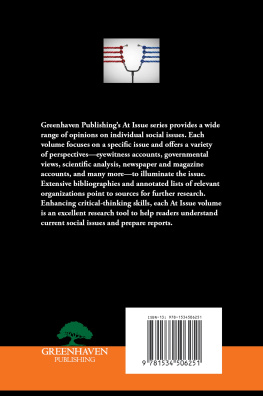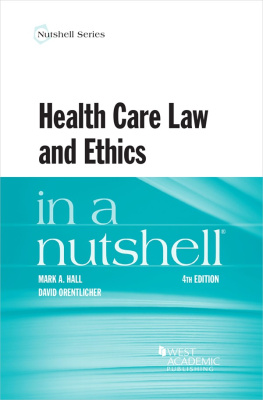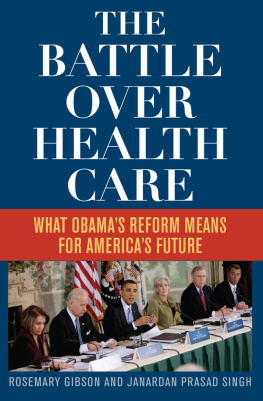First published 1998 by Westview Press, Inc.
Published 2019 by Routledge
52 Vanderbilt Avenue, New York, NY 10017
2 Park Square, Milton Park, Abingdon, Oxon OX14 4RN
Routledge is an imprint of the Taylor & Francis Group, an informa business
Copyright 1998 Taylor & Francis
All rights reserved. No part of this book may be reprinted or reproduced or utilised in any form or by any electronic, mechanical, or other means, now known or hereafter invented, including photocopying and recording, or in any information storage or retrieval system, without permission in writing from the publishers.
Notice:
Product or corporate names may be trademarks or registered trademarks, and are used only for identification and explanation without intent to infringe.
A CIP catalog record for this book is available from the Library of Congress.
ISBN 13: 978-0-367-28588-3 (hbk)
Many people have been part of the research venture which has culminated in this manuscript. In saying thank you it is hard to know where to begin.
Sources of institutional support have made it possible to study health from the many angles seen in this book. A University of Michigan sabbatical leave in 1974 helped me start a series of studies which have culminated in this book. A later sabbatical provided time for preparation of this manuscript which sets those kinds of developments in a larger socio-political context.
Both governmental and private sources funded research which deepened my understanding of various dimensions of American health care. Joint grants from the Heart, Lung, and Blood Institute of the National Institute of Health and from the United Auto Workers-General Motors Health and Safety Innovation Fund, from 1984-1988 (to Andrea Foote, Jack Erfurt, and to me through the University of Michigan's Institute of Labor and Industrial Relations) sponsored experimental intervention research on worksite wellness programs, which deepened my understanding of some current health care dynamics. Judie LaRosa, Ted Miller, and Robert Wiencek, who oversaw these grants from NIH, the United Auto Workers, and General Motors, respectively, were quite helpful. I have appreciated, as well, access I have been given both to off-the-record meetings of business and labor health officials and to officers of health care philanthropies.
My thanks, also, to Rick J. Carlson and Ken Pelletier, who have been invaluable informants and consultants about health care policy and new developments for several years. The Ann Arbor and the Michigan Holistic Health Councils, the national Coalition of Holistic Health Organizations, and the advisory council for the NIH Office of Alternative Medicine gave me access to local, state, and national networks of holistic health participants who helped me better understand this particular health movement. Berkley Bedell, Brian Berman, Dan Butts, Barrie Cassileth, Ray Castellino, Brian Clements, Sally Collins, David Eisenberg, Steven Finando, Fred Goldbeig, James S. Gordon, Phyllis Green, Gar Hildenbrand, Jennifer Jacobs, Gregory Kelley, Charlotte Kerr, Lao Lassiter, Ralph Moss, Sharon Scandrett-Hibdon, Tom Stiles, John Upledger, Nancy White, Frank Wiewel, and Richard Williams each taught me quite different things about the character and style of the holistic health movement, as did the staff of the NIH Office of Alternative Medicine.
The University of Michigan Residential College, Department of Sociology, and the University of Michigan Medical School's Inteflex program provided opportunity for me to teach about and to analyze the nature and character of American health care developments as the argument of this book was taking shape. My thanks to them, and to the approximately twelve hundred students who took these classes, helping me think through these issues as we interacted over a number of years.
A few colleagues have been especially helpful as I have wrestled with the problem of trying to understand the surprising and complex social phenomenon that emerged as American political and economic interest and our health care system interacted over time. Les Howard and William Morris stand out for their consistently thoughtful, challenging, provocative responses as I have struggled to understand these developments. Other friends and colleagues also have provided an important base of interest, support, and reaction as this project has gone forward. In addition to people already named I think with appreciation of Terry and Margaret Davies, Ruth Simmons and the late George Simmons, the late Jack Erfurt and the late Andrea Foote, Van Harrison, Jan Wright, and the late Raoul Betancourt, along with Doug, Dana, Alan, Julia and Debby Heirich, whose interest and feedback concerning various phases of this analysis have been quite helpful over the past few years. Rene Anspach, Charles Bright, James A. Bryant, Carola Burroughs, M. Linden Griffith, Joseph Jacobs, Clayton Koppock, Patricia Locke, Kristen Luker, Carolene Marks, Joyce Seltzer, Ellen Silverstone, and Tom Weisskopf provided helpful critiques of an earlier version of this manuscript from the vantage point of several intellectual disciplines, and Laurie Lehne, Rick Lempert, William Norris, and Deba Patnaik offered fine-grained critiques of that draft which were both challenging and extremely helpful. Their organizational suggestions, critiques of sometimes too facile arguments, and attention to clarity of wording have improved the quality of this account. The present argument has benefited, as well, from suggestions made by Barbara A. Anderson, Adam Bloomfield, Maaike Bouwmeister, Bruce Brock, Eugene Feingold, Maurice Gordon, Bridget Hamilton, Marianne Hillemeier, Michelle Hughley, Carolyn Holmes, Nancy Kachel, Irit Kleinman, Hollie Malamud, Tricia Marine, Kim McNally, Sallyanne Payton, Erika Pennil, Brendon Riley, Stephanie Robert, Marilynn Rosenthal, Barbara Sloat, Kevin Stankiewiecz, Duujian Tsai, Cater Webb, Bethany White, and Christina Yadao, by anonymous reviewers of an earlier draft of this book and from Deba Patnaik's and Ruth Simmon's continuing interest and attention to detail. Gene Tanke has given editorial attention which has been quite helpful. I am quite grateful for all their suggestions.
Polly Coltman, Jean Chung, Kirsten Lietz, and Janelle Neroda, reference librarians for the University of Michigan School of Public Health Library, and Steven Jensen and his crew of research librarians at the Ann Arbor Public Library were constantly helpful as I pieced together the picture of contemporary health care trends that appears in this book. The reference help given during the period of time that I was working on this manuscript while recovering from a broken hip has left me deeply grateful for their assistance, which went beyond the limits of professional courtesy. I appreciate, as well, Tom Weisskopf's generosity in sharing data sources and helping me clarify confusing aspects of contemporary economic policy and Sy Berki's advice concerning health care financing literature and appropriate measures to use with some of the data.
The contributions of these colleagues, friends and sources of support have strengthened the analysis that you are about to read. Needless to say, the responsibility for any deficiencies that remain is mine.
Special thanks to Lindsay Custer, Claudia Dwass, Paula Espindola, Laura Chiron, Daniel Kabira, Daxa Patel, Amy-Katrin St. Clair and Cater Webb for their help with endnote and manuscript preparation tasks. The University of Michigan's Department of Sociology and Institute of Labor and Industrial Relations provided computer support for manuscript preparation. Alan Heirich taught me computer programs and helped solve endless logistical problems in manuscript preparation in earlier stages of this project and was an ever-available "Man Friday" as I ran into various kinds of computer problems over a period of several years. Debby Heirich helped with manuscript preparation at critical stages of this project. My heartfelt thanks to both of them. Thanks also to Bryan Aupperle, Erna-Lynne Bogue, Dan DuRoss, Karis Gluski, Janis Michael, and Bennet Fauber for additional computer advice and help. Finally, a special vote of thanks to the staff of the Worker Health Program at the University of Michigan's Institute of Labor and Industrial Relations, including Cindy Sieck's very helpful research assistance, the late Patricia A. Strauch's copy editing, proofreading, formatting, and computerized manuscript preparation of earlier versions of this manuscript, and especially now to Carol L. Kent, who has acted as copy editor and has prepared the camera-ready copy of this book manuscript. Her knowledge, skill, commitment and dedication, and her careful attention to detail are deeply appreciated.









